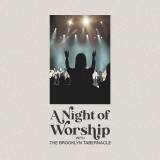THE FIVE RULES OF FLOW IN WORSHIP

Do any of these words/phrases describe moments of your worship service?
- Bumpy
- Choppy
- Awkward Pauses
- Unintended Silence
- Confusion
Let me be clear: the goal of our worship service isn't to have a slick and seamless, over-produced extravaganza. But we do want a service that flows well. Why? Good flow keeps people focused on worshiping God through the service elements instead of how we're getting from one element to the next.
And here’s some really good news. Of all the challenges you have as a worship leader, this is probably one of the easier to overcome. To help you with that, I put together this short list of “rules” to help you plan worship services with great transitions.
THE FIVE RULES OF FLOW
1. ALWAYS HAVE A PLANEvery single time you need to connect two elements in worship, whether it’s songs, scripture, the announcements, an offering, or even the message, plan it out. Plan. It. Out.
It’s easy to think it’ll “just happen” or “I’ll just wing something.” Transitions do happen, but if they aren’t intentional, they probably don’t flow as well as we’d like.
And as for the practice of winging it (improvising—for my non-American friends), that doesn’t always deliver. Or it over-delivers and the segue goes on (and on) longer than it should.
Know how you’re getting from point A to point B. Look at how one element ends and how the next one will start. Then plan out what it takes to intentionally and meaningfully move between the two.
Oh, and write it down. Why? Because you’ll need it for the next rule:
2. INFORM ALL INVOLVEDYou can have a great plan for a seamless segue into the offering, but if you don’t tell the ushers, they might still be sitting in their seats when you begin to pray for the offering.
And you can have a great non-talking transition planned between your opening song and the beginning of the announcement video. But if you haven’t gotten your video tech on board, there’s going to be an awkward moment. (You know, the kind where you try to Jedi-mind-trick him to start the video, while everyone’s staring at you wondering why you won’t say something.)
So when it comes to transitions and segues, make sure EVERYONE involved knows what’s happening, when it’s happening, how it’s happening and even WHY it’s happening.
If people catch the vision for the kind of moment you’re trying to create, they’ll be more apt to follow-through on the instructions you give them.
3. BREVITYTransitional elements should be short. Why? They’re the transition, not the main focus.
It’s great to read the entire chapter of Psalm 96 if that’s the main worship element. But if you’re just going for a segue from one song to the next, try saying something like,
"Psalm 96 tells us to 'Sing to the Lord; praise his name. Each day proclaim the good news that he saves.' Let’s proclaim the good news that he saves with this next song.”
Transition done.
And brevity is an absolute must when it’s a “talking transition.” It’s every senior pastor’s worst nightmare to have his worship leader begin to introduce a song for more than 60 seconds. Most start to get twitchy at 45 seconds.
If you feel like you need to say something, keep it brief AND follow Rule #1: Always Have a Plan. That allows you to drill into the specific thing you want to say. Not only will you save time, but your talking transition will be SO much more effective.
PAGE 1 2
THE FIVE RULES OF FLOW IN WORSHIP
 Reviewed by Admin
on
2:27:00 PM
Rating:
Reviewed by Admin
on
2:27:00 PM
Rating:
 Reviewed by Admin
on
2:27:00 PM
Rating:
Reviewed by Admin
on
2:27:00 PM
Rating:
















Post a Comment